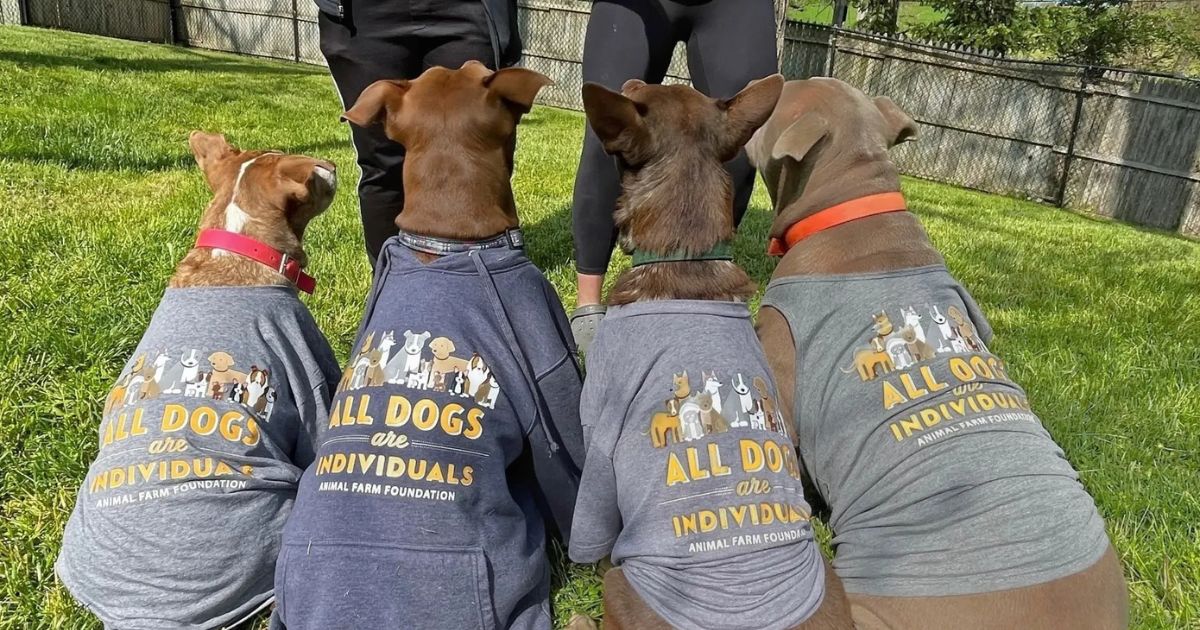Introducing dogs to cats can be a challenging task, particularly in the bustling environment of an animal shelter. However, with thoughtful planning and preparation, we can set both pets up for success and enhance their chances of finding interspecies homes. Here are some essential tips for animal shelters on facilitating smooth introductions between these two species.
Always remember: Each cat and each dog is an individual, so just because a dog gets along with one cat does not guarantee that things will be smooth with every cat. When advising adopters, be sure to recommend a slow and cautious introduction (we offer tips for at-home introductions below).
Create an Environment for Success
(this can be challenging in the shelter environment)
- Keep Dogs on Leash: Always keep dogs on a leash during introductions and have treats ready for reinforcing or redirecting behaviors. This provides better control of their movements and helps prevent sudden lunging, which could cause stress or fear for the cat.
- Provide Escape Routes for Cats:
Cats instinctively seek high places or safe spaces when they feel threatened. Make sure to have various escape routes—such as cat trees, shelves, or cozy enclaves—so cats can retreat if they need to. - Utilize Baby Gates:
Baby gates are an invaluable tool for managing introductions. They allow the dogs and cats to see and smell each other without direct contact, facilitating a gradual acclimation to each other’s presence.

The Introduction Process
- Start with a Barrier:
Begin the introduction with a barrier, like a baby gate. This allows both pets to become familiar with each other’s scents and sounds without feeling threatened. - Observe Body Language:
Closely monitor both the dog’s and the cat’s body language throughout the introduction. Watch for signs of stress, reactive, or prey drive behaviors, such as raised hackles, lip licking, growling, stalking from the dog, or hissing from the cat. If either animal displays distress, take a step back and give them time to calm down.
- Introduce with Caution:
If the initial barrier introduction goes well, proceed cautiously. Have an assistant carefully pick up the cat and observe the dog’s reaction. If the dog remains calm and composed, you can move forward. - Remove the Barrier:
If the dog stays relaxed, gently place the cat down after removing the barrier. Ensure the dog is kept away from the gate area to allow the cat to choose its interactions freely. - Keep the Dog’s Leash Loose:
Allow the dog’s leash to remain loose to create a relaxed atmosphere. A loose leash signals to the dog that there is no immediate threat, promoting a calmer interaction.
- Reinforce Positive Behavior: Have treats ready to reward the dog for calm behavior during the introduction. Positive reinforcement creates a favorable association with the presence of the cat.
Observing Behavior and Educating Adopters
Once the introduction is successful, carefully document the behaviors you observed in both the dog and the cat. It’s important to describe what you saw using appropriate, objective language. This information will be invaluable for potential adopters. Be transparent about any behaviors you observe, whether they are positive or negative.
Guiding Adopters on Home Introductions
Encourage adopters to embrace the same thoughtful approach when introducing a new dog to their resident cat at home. Stress the importance of slow introductions and the dog wearing a leash at all times in the beginning. I prefer to set cats up in a separate room for a few days while the dogs and cat get used to smelling each other. Take turns putting the dog away in a room or crate while the cat is free. Going slow offers a better chance of future successful relationships. Remind adopters to be patient and closely monitor their pets’ behavior during the process.
Conclusion
Successfully introducing dogs and cats in animal shelters will help open up more homes for both the cats and dogs. The more you can tell an adopter about a new pet the faster they will go home. By dedicating time to create a safe and controlled environment, we foster positive relationships between these two species. With these guidelines in hand, animal shelters can play a transformative role in ensuring a smoother transition for pets into their new families, promoting long-term success and harmony.
Together, we can make a meaningful difference in the lives of countless animals, helping them find the loving homes they truly deserve!








